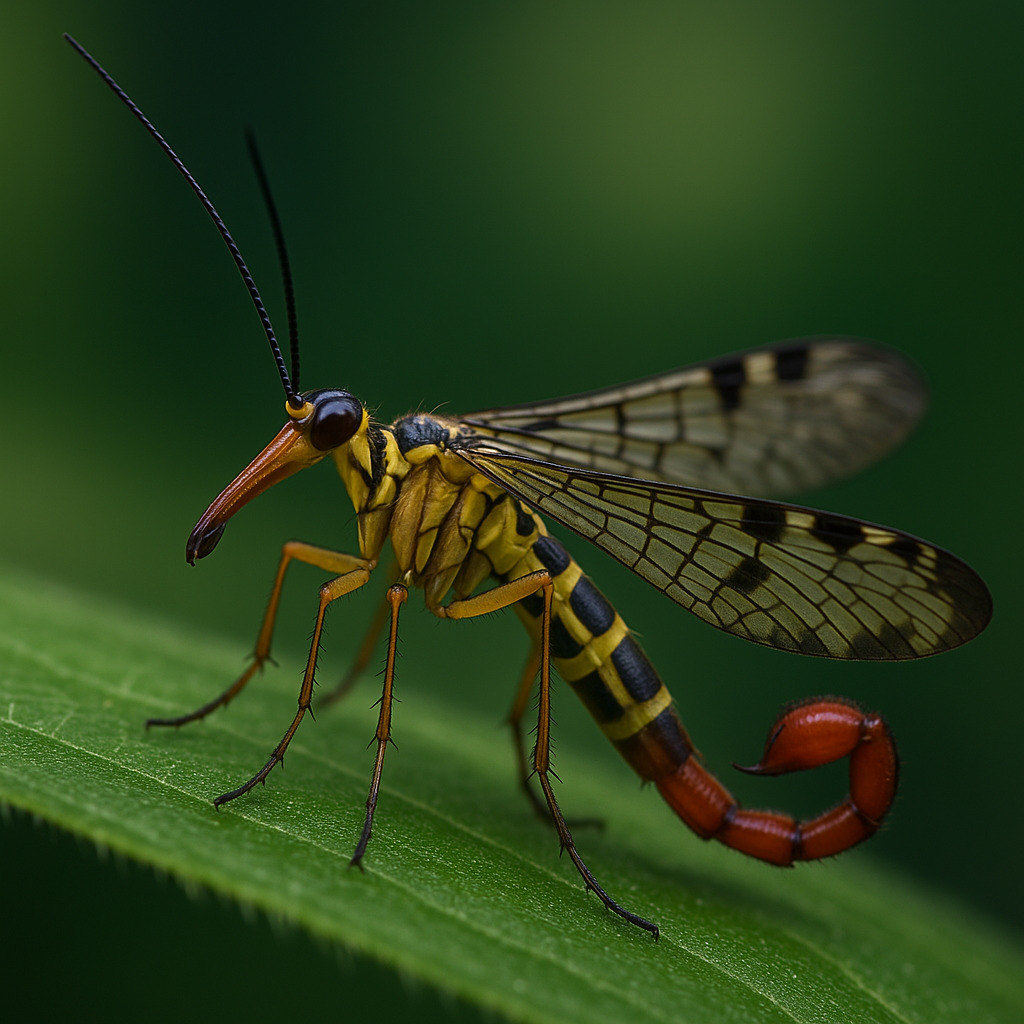The Scorpionfly: Nature’s Real Chimera Insect
Introduction
Exploring the world of insects often feels like flipping through the pages of a science-fiction novel. Every turn reveals creatures so strange that they seem designed by an artist’s imagination. That’s exactly the case with the scorpionfly. At first glance, most people think: “No way, this can’t be real—it must be an AI-generated photo.” But the truth is even more fascinating: this bizarre chimera insect really exists.
🦂 A Chimera Between Two Worlds
The scorpionfly belongs to the order Mecoptera, and the name itself already sounds unusual. The male is the true showstopper: its abdomen curves upward, ending in a bulbous structure that closely resembles a scorpion tail. Don’t worry, though—there’s no venomous stinger hidden inside. What looks like a dangerous weapon is actually just the insect’s reproductive apparatus, cleverly shaped by evolution.
🪰 Not Just Any Fly
Despite its common name, the scorpionfly is not a real fly. It is a unique insect with over 600 known species spread worldwide. Its appearance is a strange fusion: a long, horse-like head (hence the nickname “horse-fly”), transparent wings delicately patterned like those of a dragonfly, and that dramatic scorpion-like tail that screams “I’m dangerous!”—though in reality, it’s pure bluff.
🍽️ What’s on the Menu?
So, what does this unsettling chimera insect eat? Not human brains, as one might expect from a B-movie monster, but rather dead insects, nectar, and sometimes rotting fruit. In the ecosystem, the scorpionfly plays the role of a tiny cleaner. Some species are even bold enough to steal food directly from spider webs, showing that survival sometimes requires a bit of risk-taking.
💘 Love, Gifts, and Tricky Deals
Courtship in scorpionflies is as bizarre as their appearance. Males offer females a “nuptial gift”: a dead insect or a drop of sweet saliva. If the female likes the present, she consents to mate. If not, the male is out of luck. In desperate situations, some males attempt forced copulation, holding the female with their tail. A grotesque but fascinating ritual that makes the scorpionfly one of the strangest insects in terms of behavior.
🧪 Nature or Science Fiction?
Looking at the scorpionfly, it’s hard not to think of a creature engineered in a secret lab: wings like a dragonfly, a horse-shaped head, a scorpion tail, and mating strategies that sound like they belong in a psychology textbook. Yet, nothing about it is artificial. This is simply one of nature’s most inventive creations, a reminder that biodiversity often outshines even the wildest sci-fi imagination.
Conclusion
The scorpionfly doesn’t sting, doesn’t bite, and isn’t dangerous to humans. What it does is amaze, with its hybrid appearance and peculiar habits. It’s a living example that proves reality can be far more surprising than fiction. Next time you think you’ve seen everything nature has to offer, remember: there might be a strange insect waiting under the nearest leaf.








Leave a Comment